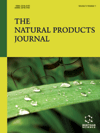
Full text loading...
We use cookies to track usage and preferences.I Understand

Hibiscus sabdariffa is a plant used in traditional medicine for intestinal treatments and nowadays for critical diseases like hypertension, diabetes, and cancer. Multidisciplinary approaches have demonstrated, through Hibiscus sabdariffa extracts, anti-inflammation and anti-cancer beneficial properties from compounds like phenols, flavonoids, and anthocyanins that are ubiquitously distributed in whole plants.
The objective of this study is to identify the bioactive compounds and their underlying mechanisms of action that drive the anti-cancer and anti-inflammatory properties of Hibiscus sabdariffa extracts.
We searched databases for publications in English from all years that reported beneficial anti-inflammation and anti-cancer properties from Hibiscus sabdariffa extracts and their proposed mechanism of action. We used Pubmed, Google Scholar, Scopus, and ScienceDirect for original articles that included different Hibiscus sabdariffa extracts evaluated for their anti-inflammation, and anti-cancer properties, using the following search terms: “H. sabdariffa”, “H. sabdariffa extracts”, “H. sabdariffa and inflammation”, and “H. sabdariffa and cancer”. Some articles from the reference list were used to collect additional information, and we used 73 articles in total.
In general, extracts from Hibiscus sabdariffa are obtained by different methods that affect the final concentration of the compounds. Several in vivo and in vitro experiments show their anti-inflammatory and anti-cancer properties.
Hibiscus sabdariffa extracts have the potential bioactivity to modulate inflammation and cancer in several cellular and molecular mechanisms of action involving the downregulation of key signaling pathways such as NFκB, MAPK, BCL-2, p53, among others, and the upregulation of protective pathways such as Nrf2. However, research needs to be further evaluated on the exact compounds that have this effect, in order to know if the extracts work individually or synergistically.

Article metrics loading...

Full text loading...
References


Data & Media loading...